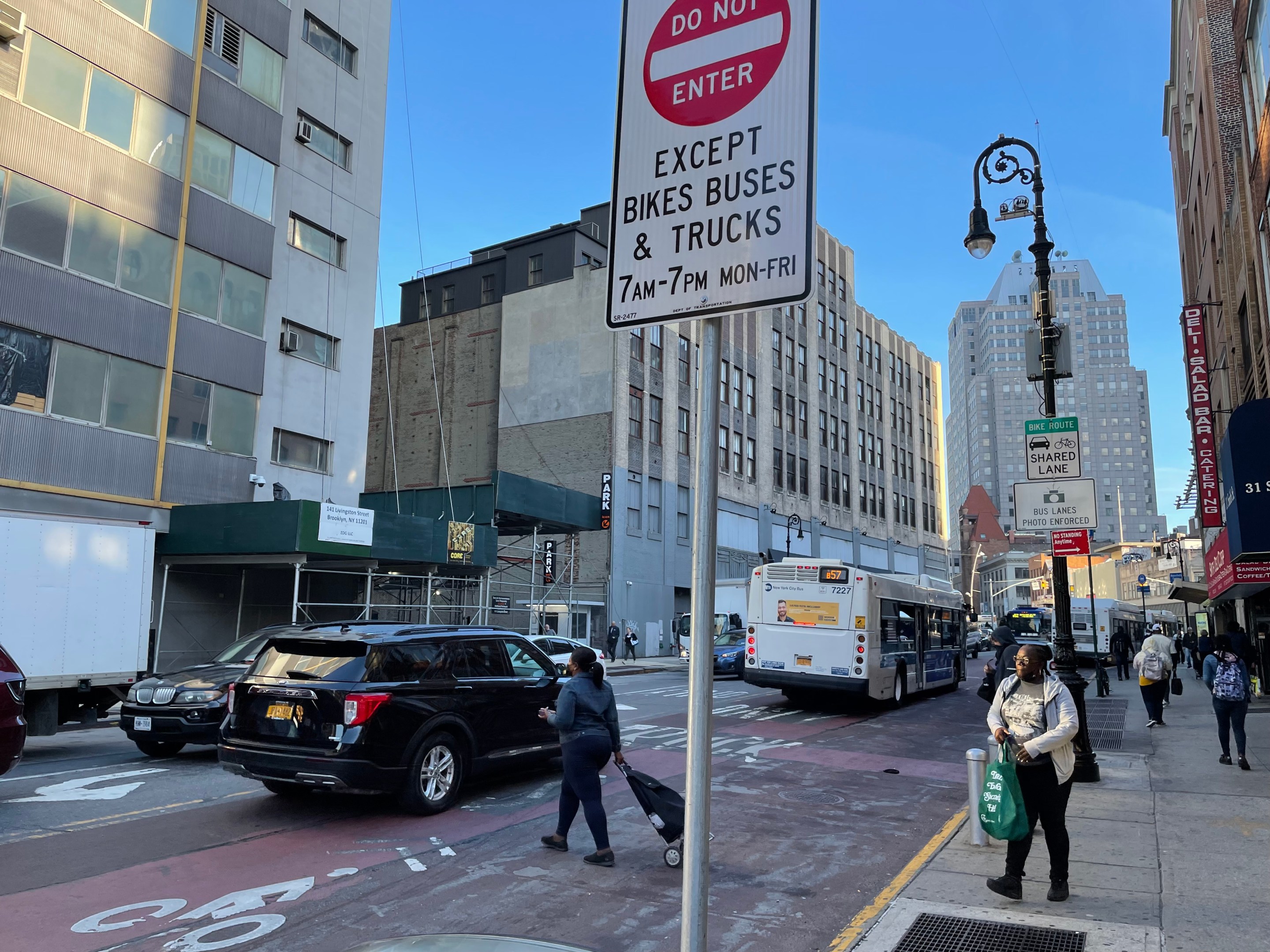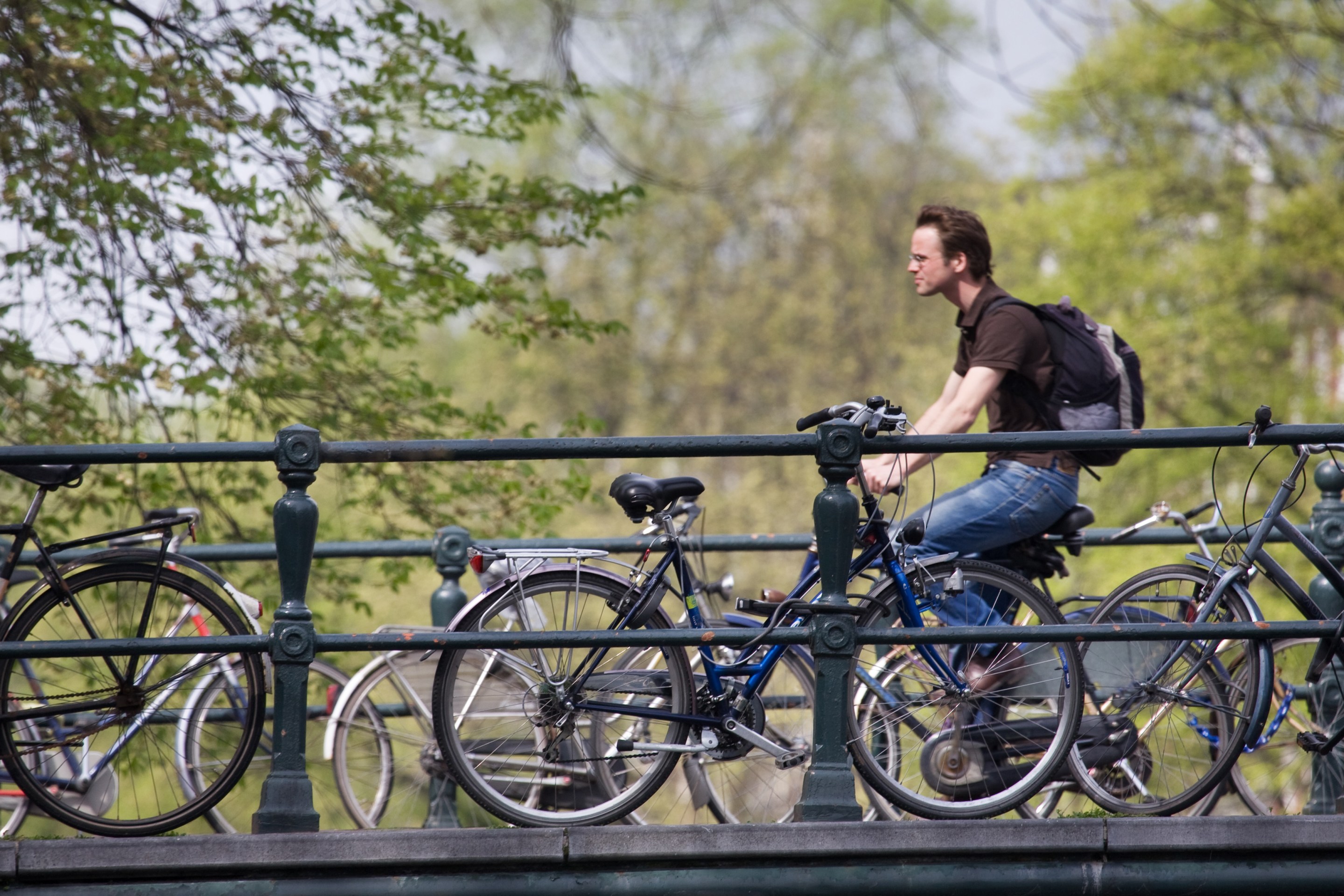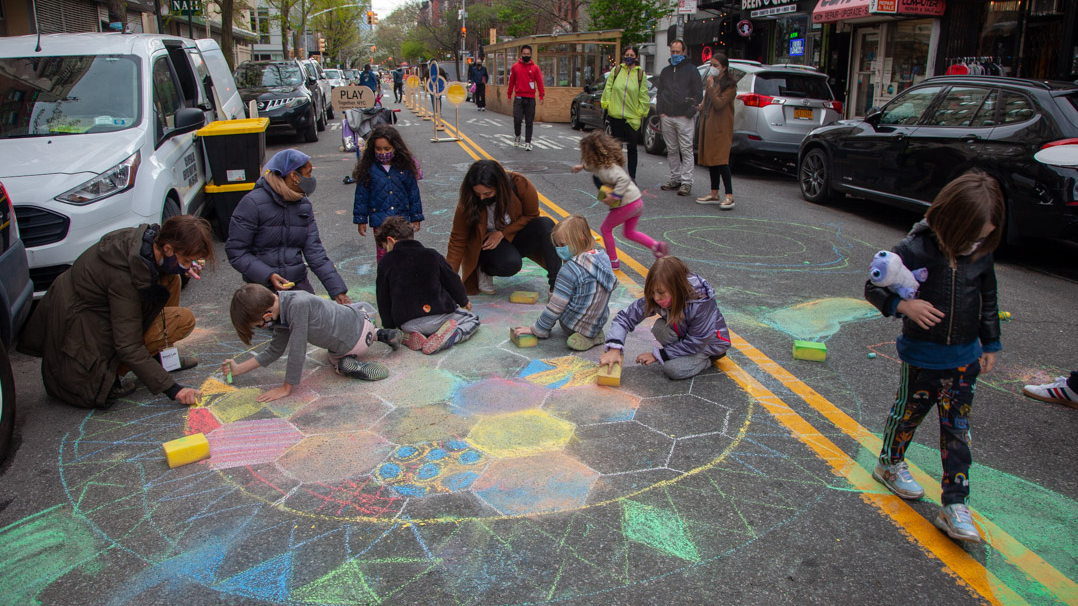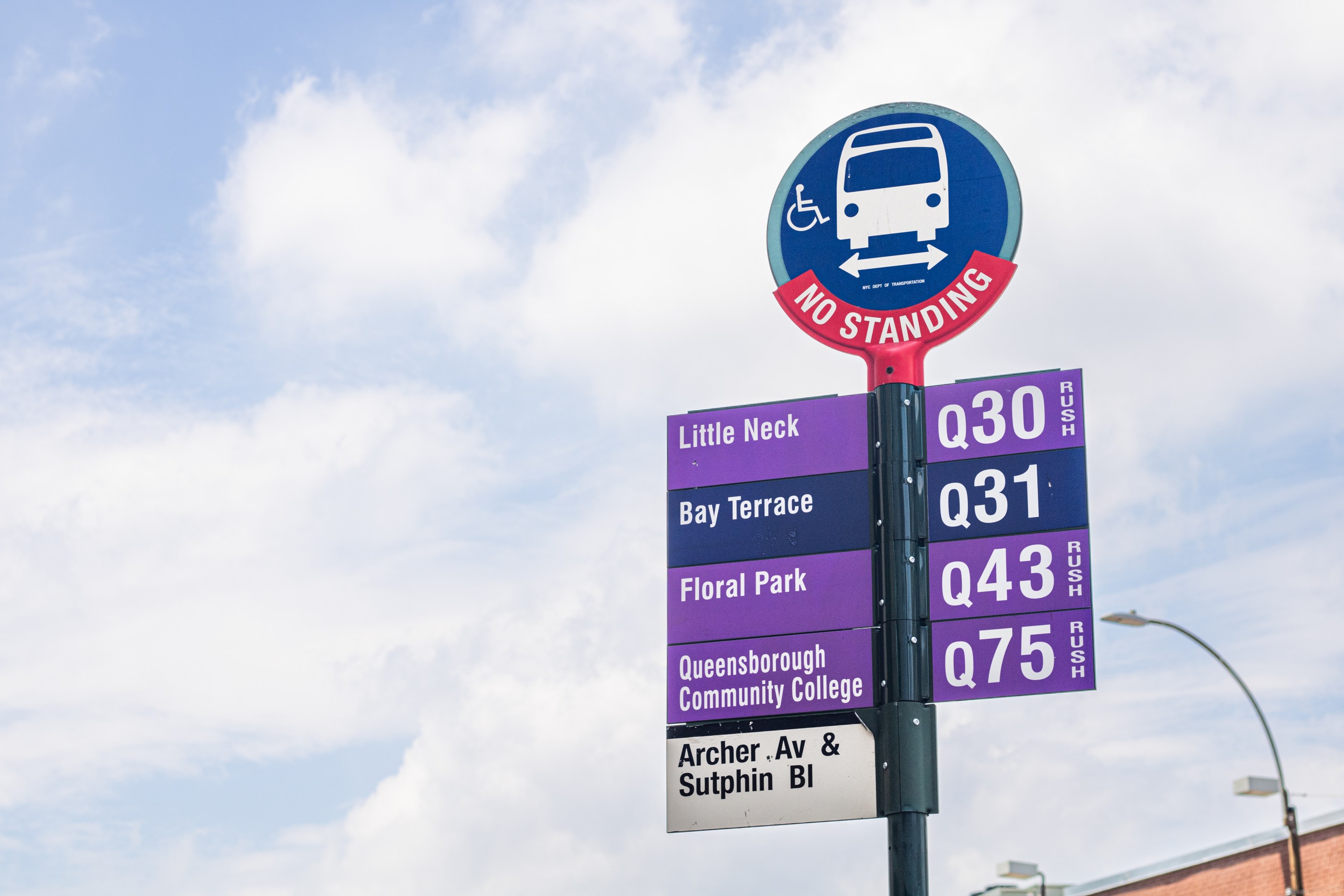Never let it be said he didn't do the least he could do.
Mayor de Blasio announced on Friday that the Jay Street busway — a 0.4-mile sluice through congested Downtown Brooklyn where private cars are restricted (though not banned) in favor of bus passengers and bike riders — has been made permanent, joining the 1.1-mile 14th Street busway.
Roughly 50,000 passengers on seven MTA routes have been benefitting from the car-restricted zone between Livingston and Tillary streets.?DOT data shows that buses have increased speeds by up to 47 percent during some parts of the day. But improvements could hardly have been otherwise, given that the average bus speed for all routes on Jay Street was less than 5 miles per hour at the time of the busway's implementation in late August, 2020.
And bus speeds did indeed improve by October, 2020, Streetsblog reported at the time. But a year later, car drivers had started encroaching on the space, chipping away at many of the gains in the northbound direction:
- Morning rush hour buses dropped from 6.5 miles per hour to 5.5 miles per hour.
- Midday buses dropped from almost 6 miles per hour to just over 4 miles per hour.
- Evening rush hour buses dropped from just over 6 miles per hour to just over 5 miles per hour.
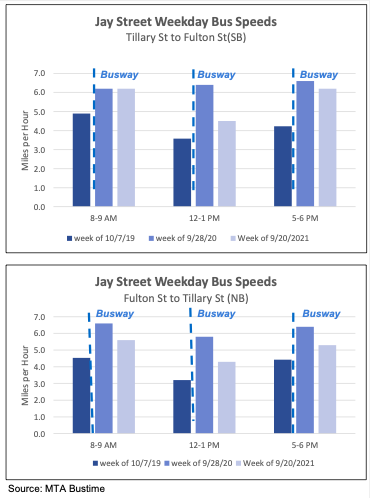
Southbound buses maintained their speed improvements during the morning and evening rush hours, but in the afternoon, buses dropped from just over 6 miles per hour in September 2020 to about 4.5 miles per hour in September 2021. (See chart, right.)
Even with the setbacks, buses on Jay Street were still better than they were before the busway, data show. "But that’s an accomplishment on par with the Jets going from 4-12 to 7-9 from one season to the next," Streetsblog's Dave Colon quipped.
Mayor de Blasio took a different view. Making the busway permanent will "build on this progress to make public transit faster, safer, and more reliable for riders in every borough,” he said in a statement.
And DOT Commissioner Hank Gutman added that the busway was “transforming Downtown Brooklyn, getting cars out of the picture and focusing on our sustainable transportation future, transit and cycling.”
Many cars have indeed been banished from the busway, thanks to rules that require drivers to exit the busway via the first available turn, and also barring direct access from the south or north between 7 a.m. and 7 p.m. on weekdays. But the rules still allow lots of drivers on the road — even the city's official Flickr page of the busway shows plenty of private cars mixed in with the buses and bikes. The DOT said that bus-lane restrictions are enforced by cameras in fixed positions along the busway; buses on cameras will be deployed soon. The cameras have issued 14,499 tickets through Nov. 4, the DOT said. Additional "do not enter" signage will be added to the busway before the end of the year, the agency added.
Another of the busway's success — safety — was not even promoted in the city's press release. In the 12 months before the busway was instituted, there were 54 crashes on the 0.4-mile stretch, injuring nine cyclists, six pedestrians and one driver. In the 12 months after the busway was created, the number of crashes dropped to 20 — a decline of nearly 63 percent. Cyclist injuries dropped to five and pedestrian injuries dropped to three. That's all from city statistics.
The Jay Street busway is the first of the city's post-14th Street transit projects to be made permanent. Other busways — on 181st Street in Upper Manhattan, on Jamaica and Archer avenues in Jamaica, and on Main Street in Flushing — remain, technically pilot projects.
But they remain urgent, said Liam Blank of Tri-State Transportation Campaign.
"With traffic congestion on the rise, and average bus speeds cratering as a result, it's targeted investments like the Jay Street Busway that will produce significant benefits for thousands of daily bus riders," he said.
